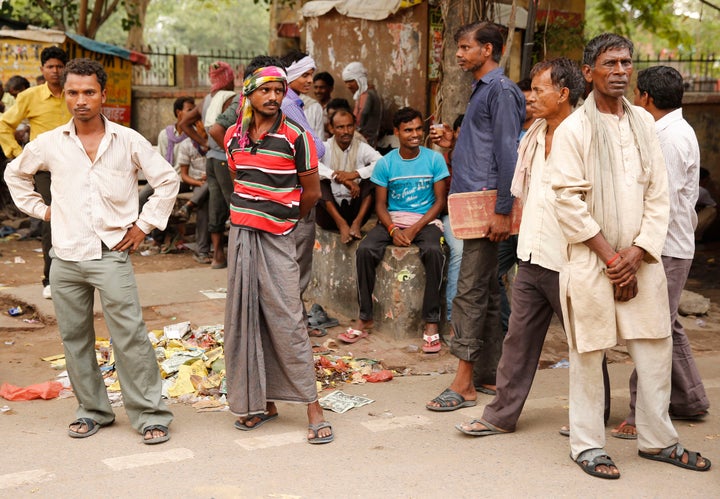
The past few weeks, building up to the interim budget, have been exciting for observers as well as participants of economic policy making. First, some version of a “universal basic income” (UBI) seems imminent in the budget. Second, there has been much drama around employment statistics, with reports being withheld by the government and leaked to the press.
Let us take UBI first. Even a few years ago, this type of a policy would have seemed unlikely to be implemented in India. It is on the front-burner today because of a combination of factors. First, what is being proposed is not a truly “universal” income transfer, but rather a targeted one, on the basis of occupation or income level. This makes the idea politically as well as fiscally more feasible. Some have proposed a national version of the popular Telangana scheme, Rythu Bandhu, that transfers Rs 4,000 per acre per season to all landed agricultural households.
Others have proposed an income transfer to the bottom 75% of the rural population, whether possessing land or not. The second factor that is responsible for the popularity of such a policy is rising rural distress arising from droughts and a collapse in farm incomes. The third factor is worry over joblessness or rising unemployment. And finally, of course it is crucial that farm distress and unemployment are rising in an election year, forcing the government to do something bold and big on the welfare front.
On unemployment, the government has had a difficult time not only because jobs have been scarce, but also because data on jobs has been scarce. The last published government statistics on the national employment-unemployment situation are from 2015 (the 5th round of the Labour Bureau survey). For the three subsequent years, which saw two large policy interventions —demonetisation and the introduction of Goods and Services Tax (GST) —nationally representative survey data is not available.
Two surveys have been conducted during this period, the 6th round of the Labour Bureau in 2016-2017 and the new Periodic Labour Force Survey (PLFS) in 2017-2018. However, results, despite being ready, have not been made public for either survey. Instead, estimates of job creation in the public domain have been based on the Employee Provident Fund Organisation (EPFO) and other similar databases, which only cover a small portion of the Indian workforce. These showed job creation, but the numbers were not indicative of the economy as a whole.
After much uncertainty as to what was going on, the headline unemployment numbers from both household surveys were leaked to the press. And they spell bad news for the government. As per the PLFS, in 2017-2018 the unemployment rate stood at a 45-year high of 6.1 percent.
The numbers were particularly high among the youth and the educated. These numbers, at least in trend if not level, are consistent with the findings of the private surveys conducted by the Centre for Monitoring the Indian Economy. The CMIE numbers indicate a steady fall in net employment in the economy as a whole from 2016 to 2018. This means that, on balance, more jobs or employment opportunities were destroyed over this period than were created.
Clearly, both rural distress and unemployment (particularly among educated youth) are urgent problems. If it is implemented well and last-mile delivery problems are sorted out (a big if), directed income transfer or a basic income programme would have the effect of alleviating immediate distress and bolstering aggregate demand. Of course, it is possible that the policy will be accompanied by a cut in other subsidies, so the net effect may be smaller.
However, the larger point is that, as with farm loan waivers, such a policy does not fix the underlying problems. We need a bold policy vision that can create non-farm jobs and raise incomes. This is a far more difficult proposition than instituting an income transfer programme.
There are several ideas out there on what should be done, and many more should come. I will outline one here. It draws on the fact that just as there is an unprecedented crisis of joblessness, there are also unprecedented opportunities for job creation. The last two decades have seen a dramatic divergence between the quality of private and public goods in our economy. As malls, mobiles, and motorcycles have flourished, our streets, schools and sanitation have suffered. This is a result of underinvestment over the decades. Restoring as well as creating much-needed public goods for India’s future must be made our priority.
Cleaning lakes, greening commons, paving footpaths, running trains, teaching children, caring for the sick, building houses, are jobs that need to be done. These jobs require a range of skills and education levels. Fortunately for us, many of them are harder to mechanise and need humans to do them. They are also hard to substitute with imports and must be performed locally. But they do need a big commitment of fiscal resources. We cannot pay anganwadi workers a regular government wage or hire the teachers and doctors we need, or build the parks we want and clean the streets without spending public money. But if we do spend, then we will be repaid many times over, not only due to increased demand and multiplier effects, but also because such investments will increase productivity, and more importantly the quality of life in India’s cities and villages. Is it too much to expect this year’s budget to kickstart this process?